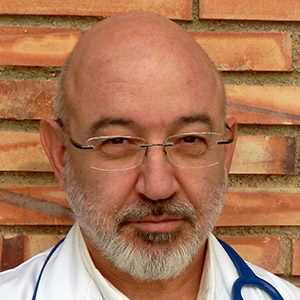Únete a nuestro boletín
Recibe información actualizada, novedades y noticias sobre la lactancia, el proyecto e-lactancia y otras iniciativas de APILAM
Legitimación: Consentimiento del interesado.
Como usuario e interesado te informo que los datos que nos facilitas estarán ubicados en los servidores de Mailchimp (proveedor de email marketing de APILAM) fuera de la UE en EEUU. Mailchimp está acogido al acuerdo EU-US Privacy Shield, cuya información está disponible aquí, aprobado por el Comité Europeo de Protección de Datos. Ver política de privacidad de Mailchimp. (https://mailchimp.com/legal/privacy/).
El hecho de que no introduzcas los datos de carácter personal que aparecen en el formulario como obligatorios podrá tener como consecuencia que no podamos atender tu solicitud.
Podrás ejercer tus derechos de acceso, rectificación, limitación y suprimir los datos en apilam.es@gmail.com así como el derecho a presentar una reclamación ante una autoridad de control.
Puedes consultar la información adicional y detallada sobre Protección de Datos en esta web: http://e-lactancia.org, así como consultar nuestra propia política de privacidad.

Agente alquilante compuesto por un metal pesado derivado del platino, con propiedades antineoplásicas por inhibición de la síntesis de ADN.
Uso intravenoso en el tratamiento de cánceres avanzados o metastásicos (ovario, testículo, pulmón).
Hay confusión con la semivida de eliminación del cisplatino. La vida media plasmática del cisplatino es de 20 a 30 minutos (AEMPS 2013, Bristol 2010). Los compuestos ligados a la albúmina, con un elevado porcentaje de fijación (> 90%), son eliminados lentamente con una vida media de 4 - 5 días (Drugbank.com, AEMPS 2013, Bristol 2010), pero estos compuestos ni tienen actividad antineoplásica (AEMPS 2013) ni se han medido en la leche.
Se sabe por Farmacocinética que pasadas 3 semividas de eliminación (T½) se elimina del organismo el 87,5% del fármaco; tras 4 T½ el 94%, tras 5 T½ el 96,9%, tras 6 T½ el 98.4% y tras 7 T½ el 99%. A partir de 7 T½ las concentraciones plasmáticas de fármaco en el organismo son despreciables. En general, un período de al menos cinco vidas medias puede considerarse un período de espera seguro para volver a amamantar (Anderson 2016).
Si se considera la vida media del producto antineoplásico, sólo serían necesarias 3 a 4 horas (7 vidas medias) de espera para amamantar, extrayendo y desechando la leche mientras.
Seis estudios diferentes han analizado la excreción de cisplatino en leche materna (Hays 2013, Tesfaye 2013, Lanowska 2011, Ben-Baruch 1992, de Vries 1989 y Egan 1985), cada uno con un caso, menos Lanowska que describe 3 casos y Tesfaye 2 casos.
Las concentraciones de cisplatino encontradas en leche en las primeras 24-48 horas tras la administración fueron: 0,9 mg/L (de Vries 1989), 0,15 mg/L (Ben-Baruch 1992) y 0, 2, 1,4 y 5,5 mg/L (Lanowska 2011).
Los otros tres autores (Hays 2013, Tesfaye 2013 y Egan 1985) encuentran concentraciones en leche por debajo del límite de detección:
- Tras una primera administración de 70 mg de Cisplatino hubo una concentración en leche de 0,016 mg/L a las 5 horas, cayendo por debajo del límite de detección a partir de las 17 horas y siendo totalmente indetectable a las 66 horas, por lo que el autor (Hays 2013) cree que puede volverse a amamantar tras esperar 3 días, habiendo extraído y desechado la leche esas 72 horas.
- En dos mujeres no se encontraron niveles detectables de platino en la leche de ninguna de las dos (Tesfaye 2013).
- En otro estudio (Egan 1985), tras la infusión de 130 mg de cisplatino los niveles plasmáticos de la madre fueron subiendo pero no se encontraron niveles detectables de cisplatino en leche en ninguna de las múltiples medidas hechas en las primeras 71 horas tras la infusión.
Hay que considerar además que su baja biodisponibilidad oral impide el paso a plasma del lactante a partir de la leche materna ingerida, salvo en prematuros y periodo neonatal inmediato en los que puede haber mayor permeabilidad intestinal.
Debido a todos estos hallazgos, las opiniones entre los autores y organismos están divididas: los que consideran que no es prudente amamantar si no se pueden medir los niveles en leche o hasta que no pasen 20 días de la administración (Hale 2017, p.204), los que consideran que es mejor suspender la lactancia (Pistilli 2013, WHO 2002), los que piensan que hay que sopesar cuidadosamente beneficios y riesgos (Koren 2013), los que no se pronuncian (Moretti 2000) y los que creen que es compatible con la lactancia, Hays en 2013 y la Academia Americana de Pediatría (AAP 2001) basándose en el estudio de Egas de 1985.
Dada la fuerte evidencia que existen sobre los beneficios de la lactancia materna para el desarrollo de los bebés y la salud de las madres, conviene evaluar el riesgo-beneficio de cualquier tratamiento materno, incluida la quimioterapia, asesorando individualmente a cada madre que desee seguir con la lactancia (Koren 2013).